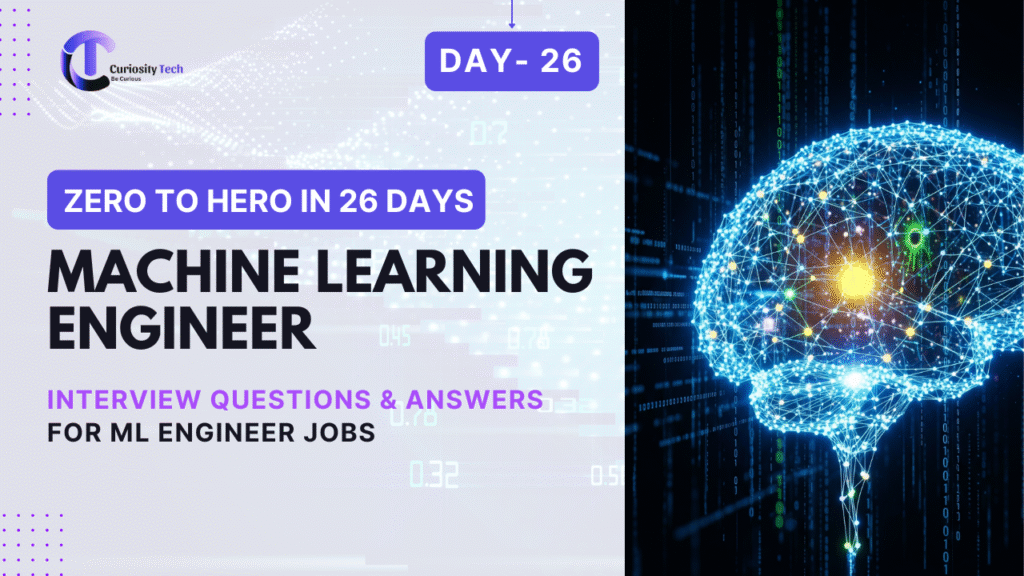Introduction
Landing a Machine Learning Engineer role in 2025 requires more than just theoretical knowledge. Interviews now evaluate practical problem-solving, coding skills, domain understanding, and real-world experience.
At CuriosityTech.in (Nagpur, Wardha Road, Gajanan Nagar), learners get scenario-based interview preparation, mock interviews, and guidance on tackling complex ML problems effectively.
1. Core Interview Areas
ML interviews usually cover:
- Programming & Data Structures – Python, NumPy, Pandas, algorithms
- Machine Learning Concepts – Supervised, unsupervised, reinforcement learning
- Deep Learning – Neural networks, CNNs, RNNs, Transformers
- Data Preprocessing & Feature Engineering – Scaling, encoding, missing value handling
- Model Evaluation & Tuning – Cross-validation, hyperparameter tuning, metrics
- Deployment & MLOps – Flask/FastAPI, cloud ML platforms, CI/CD
- Scenario-Based Problem Solving – Real-world ML applications
- Behavioral & Soft Skills – Communication, teamwork, problem-solving
2. Common Theoretical Questions
| Question | Answer Guide | Key Points |
| What is overfitting, and how do you prevent it? | Overfitting occurs when the model learns noise instead of general patterns. Techniques: regularization (L1/L2), dropout, early stopping, cross-validation. | Explain with a simple dataset example. |
| Explain bias-variance tradeoff | Bias: error due to wrong assumptions, Variance: error due to sensitivity to data. Balance by tuning model complexity. | Use plots to demonstrate. |
| Difference between supervised, unsupervised, reinforcement learning | Supervised: labeled data, Unsupervised: unlabeled data, RL: agent interacts with environment to maximize rewards | Include real-world examples. |
| How do you handle missing data? | Techniques: drop missing rows, mean/median imputation, model-based imputation | Mention pros and cons. |
| Explain precision, recall, F1-score | Precision: TP/(TP+FP), Recall: TP/(TP+FN), F1: harmonic mean | Discuss trade-offs. |
CuriosityTech Insight: Learners at CuriosityTech.in are trained to explain concepts with examples, not just definitions, making answers more convincing in interviews.
3. Practical & Scenario-Based Questions
Scenario 1: Predicting customer churn for a telecom company
- Question: How would you approach the problem?
- Answer Guide:
- Understand the data and business goal
- Preprocess data (handle missing values, encode categorical features)
- Split data (train/test)
- Select models (logistic regression, random forest, XGBoost)
- Evaluate with ROC-AUC, F1-score
- Deploy and monitor in production
- Understand the data and business goal
Scenario 2: Classifying images of handwritten digits
- Question: Which model would you use?
- Answer Guide: CNN (Convolutional Neural Network)
- Implementation Tips:
- Use normalization and augmentation
- Train on MNIST dataset
- Evaluate with accuracy and confusion matrix
- Use normalization and augmentation
Scenario 3: Recommender system for e-commerce
- Question: How to build and evaluate it?
- Answer Guide:
- Collaborative filtering (user-item matrix)
- Content-based filtering (item features)
- Hybrid approach
- Metrics: RMSE, Precision@K, Recall@K
- Collaborative filtering (user-item matrix)
4. Coding & Technical Questions
- Implement linear regression from scratch
- Write a function for train-test split
- Implement gradient descent algorithm
- Python coding questions related to NumPy, Pandas, and data manipulation
Example Python Question:
# Normalize a dataset column-wise
import numpy as np
def normalize(X):
return (X – X.mean(axis=0)) / X.std(axis=0)
CuriosityTech Insight: Learners practice live coding and whiteboard sessions, building confidence for technical rounds.
5. Deep Learning & Advanced Questions
| Question | Answer Guide |
| Explain CNN architecture | Convolutional layers, pooling layers, fully connected layers, activation functions |
| What is overfitting in deep learning? | Use dropout, data augmentation, regularization |
| Difference between RNN, LSTM, GRU | LSTM/GRU solve vanishing gradient problem; good for sequential data |
| What is transfer learning? | Using pretrained models (ResNet, BERT) for new tasks |
| Explain reinforcement learning | Agent learns by interacting with environment to maximize cumulative reward |
Scenario: Riya explains fine-tuning BERT for sentiment analysis in an interview, demonstrating practical knowledge and reasoning.
6. Deployment & MLOps Questions
- How to deploy an ML model with Flask or FastAPI
- Explain CI/CD pipelines for ML
- How to monitor model drift and retraining
- Cloud deployment: AWS SageMaker, Azure ML, GCP Vertex AI
CuriosityTech Insight: Learners build end-to-end deployment projects, which impress interviewers and highlight production-readiness.
7. Behavioral & Soft Skill Questions
- Describe a challenging ML project and how you solved it
- How do you handle conflicting data or ambiguous business goals?
- How do you stay updated with ML trends in 2025?
Preparation Tip: Use STAR (Situation, Task, Action, Result) framework for answering behavioral questions.
8. Interview Preparation Strategy

9. Key Takeaways
- Interviews test conceptual understanding, coding skills, and real-world problem-solving
- Scenario-based preparation is crucial for demonstrating practical ML expertise
- Hands-on deployment and project experience differentiate candidates
- CuriosityTech.in provides mock interviews, project mentorship, and guided preparation
Conclusion
Preparing for ML engineer interviews in 2025 requires deep knowledge of ML concepts, coding skills, project experience, and soft skills. By practicing scenario-based questions, deploying models, and revising fundamental concepts, aspirants can excel in technical interviews and secure high-demand roles.
CuriosityTech.in offers structured guidance, mock interviews, and mentorship, helping learners confidently tackle ML interviews. Contact +91-9860555369 or contact@curiositytech.in to prepare for top ML roles in 2025.

